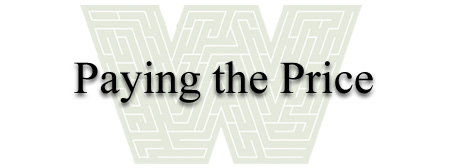
Is College Pretty Cheap?
Students oppose ceding control to the regents, feeling that lawmakers will be more reluctant to raise tuition. The ASUW and other student groups fought against regental control during the last session in Olympia. Lawmakers decided on a one-year experiment giving regents and trustees tuition authority for all students except resident undergraduates. For this group, lawmakers set limits on any increase-16 percent for UW and WSU, 14 percent for regional universities and 12 percent for community colleges.
In May the UW launched a plan to bring business, law, dentistry and pharmacy graduate tuition up to market rates over the next three to five years. It also boosted resident and non-resident undergraduate tuition by the full 16 percent. Other state universities also raised their tuition to the limit. Anticipating these increases, the state put extra money into its financial aid program, and the UW set aside part of the increase to make sure there would be no more financial burden on those who qualify.
But no one is happy about the outcome. ASUW President Danica You complains that the state is balancing its budget on the backs of the students. While encouraged by the experiment, Huntsman and McCormick point out that lawmakers made the UW raise enrollments even as the state cut its budget. "Students will be paying more and getting less," the President warns.
But even with a 16 percent tuition increase, UW resident rates are below the average of its peers, currently estimated at $4,763. "There is still some opportunity for tuition to rise," says Harlan Patterson, '81, the associate vice provost for planning and budgeting.

"It's not going to be the same institution." - Faculty Senate Chair Bradley Holt.
Photo by Mary Levin
Huntsman adds that the price of a college education is still "pretty cheap" in the eyes of the public. In one recent state survey, the average citizen put UW tuition at $10,000 a year for resident undergraduates—more than double the actual rate.
But faculty leader Holt says a high-tuition model will also mean higher student debt, funneling students away from some disciplines and career choices, such as public service or teaching. "If you are going to graduate with $30,000 in debt, that's going to have an influence on your choices," he says.
Another factor is non-resident tuition. At many universities, out-of-state students pay more than the actual cost of their education; currently UW non-resident undergrads pay about 140 percent. The extra money, in effect, subsidizes the resident students, Patterson explains. At Michigan, Wisconsin and Colorado, for example, one-third of the undergraduates are non-residents. At Oregon about 26 percent come from out of state. At the UW only 13 percent are non-residents.
Patterson says the UW will never go as high as some peers, but there is some room for admitting more non-residents-and for tightening loopholes that allow many non-residents to qualify as residents after one year.
Research Grants
One of the brightest paths out of the maze is research income. For 2001-02, the UW is projecting a 17 percent increase over last year-totaling about $770 million. The money not only pays for direct research expenses such as lab equipment and salaries. Research grants also include funds to cover general overhead-what the federal government calls indirect costs, such as electricity, janitorial services, libraries and building maintenance.
The UW currently adds 51.6 percent to the direct cost of on-campus research projects to cover its indirect costs. While the money covers only research activity, it has helped cushion the blow of budget cuts.
- Page 4: A Quiet Corner of the University
- Page 5: Looking to the Future
- Sidebar: Ups & Downs: Futures in UW Funding
- Return to September 2002 Table of Contents